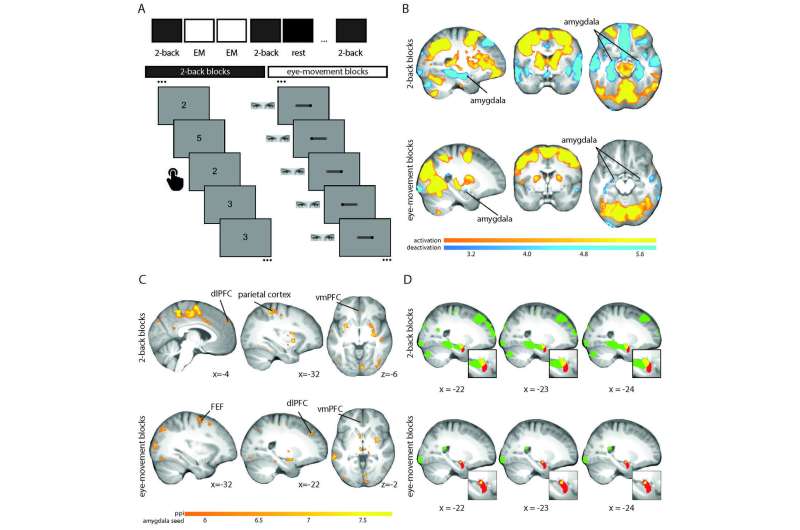Eye movements take edge off traumatic memories

Two human experiments published in JNeurosci demonstrate that a widely used yet controversial psychotherapy technique suppresses fear-related amygdala activity during recall of a traumatic memory.
Despite being a common and evidence-based therapy, Eye Movement Desensitization and Reprocessing (EMDR)—discovered serendipitously in 1987 by a psychologist while walking in the woods—it is unclear whether the eye movements in this treatment provide any additional benefits to patients struggling with fear-related disorders that are not readily achieved through traditional exposure therapy. The promise of EMDR is its potential to recode the emotional content of the traumatic memory itself.
Investigating the neurobiological mechanisms underlying EMDR in healthy men and women, Lycia de Voogd and colleagues found that both side-to-side eye movement and a working memory task independently deactivated the amygdala—a brain region critical for fear learning. The researchers show in a second experiment that this deactivation enhanced extinction learning—a cognitive behavioral technique that reduces the association between a stimulus and a fear response. The reduced amygdala activity is thought to be a consequence of less available resources since they are dedicated to making eye movements.
More information: Lycia D. de Voogd et al, Eye-movement intervention enhances extinction via amygdala deactivation, The Journal of Neuroscience (2018). DOI: 10.1523/JNEUROSCI.0703-18.2018
















